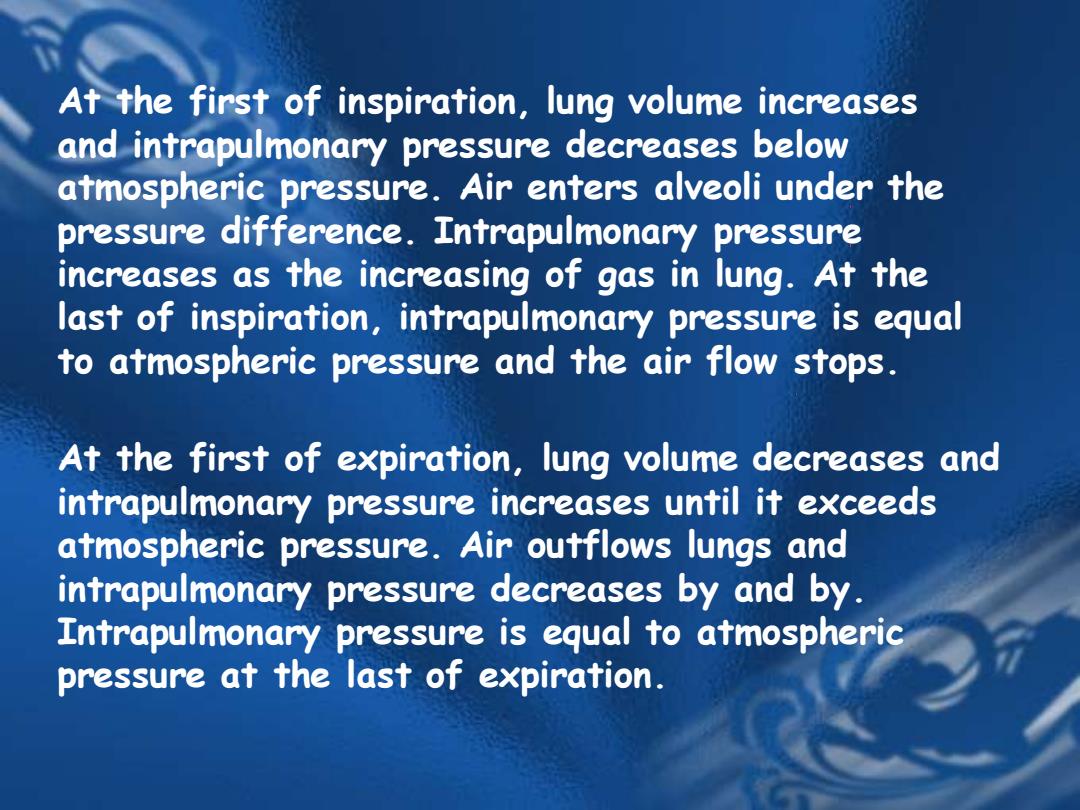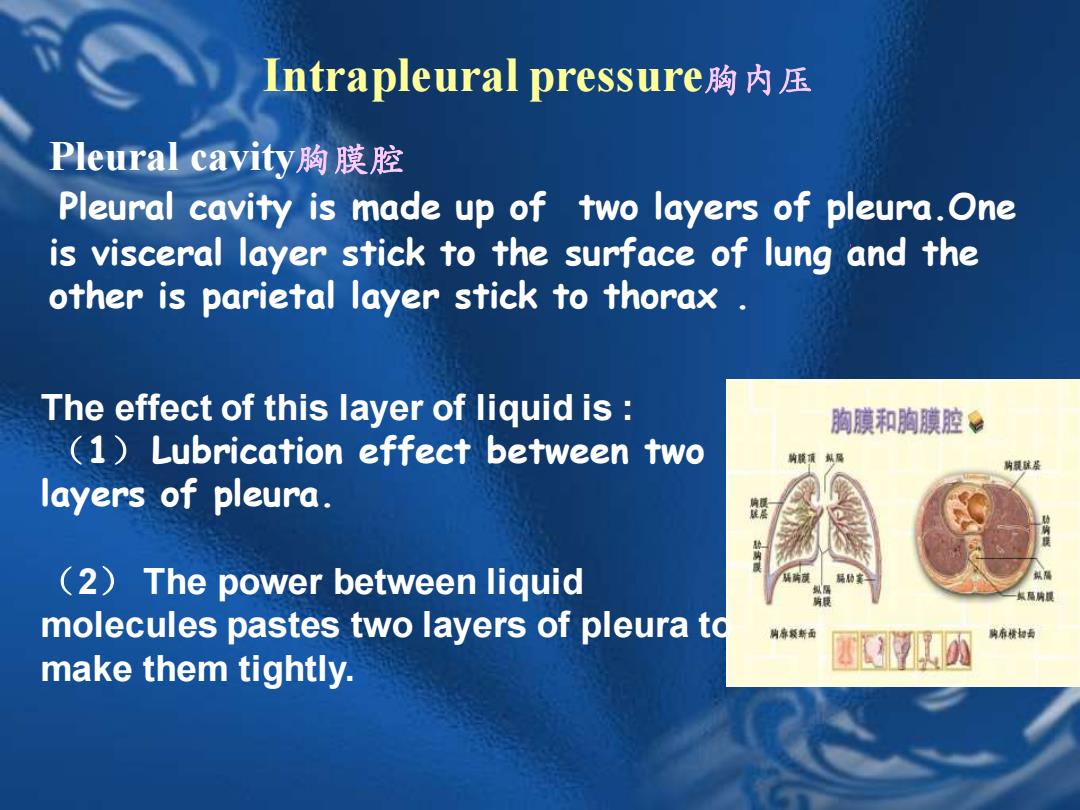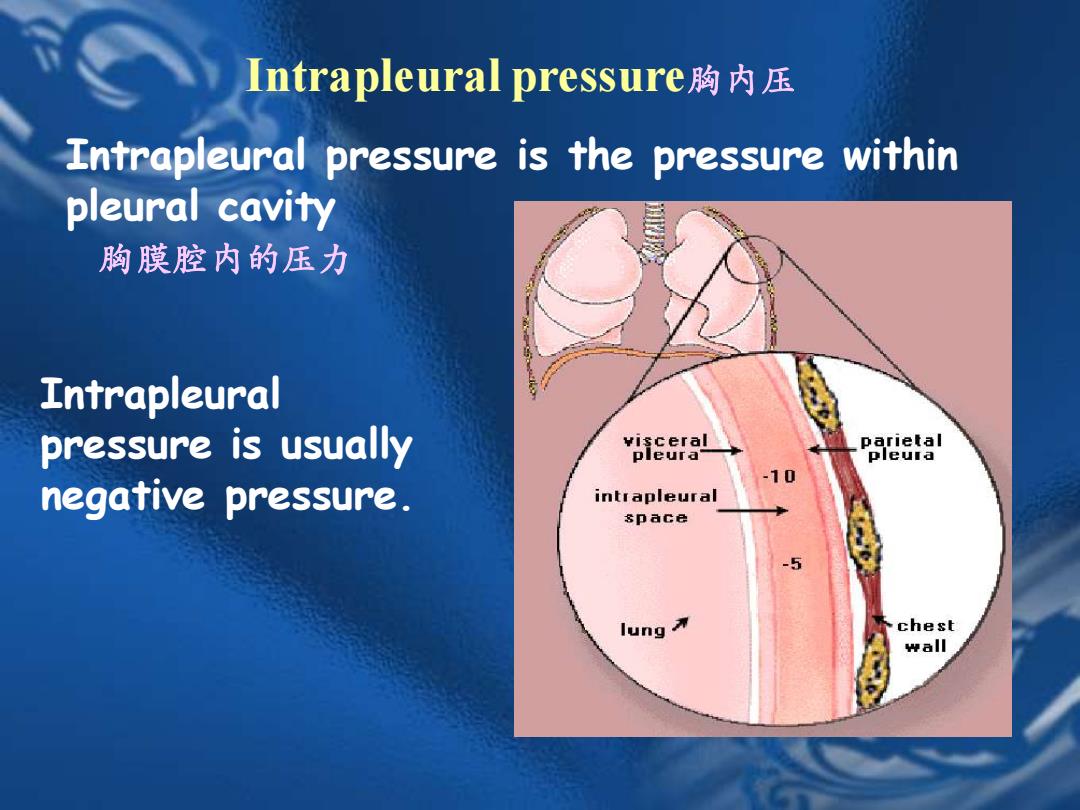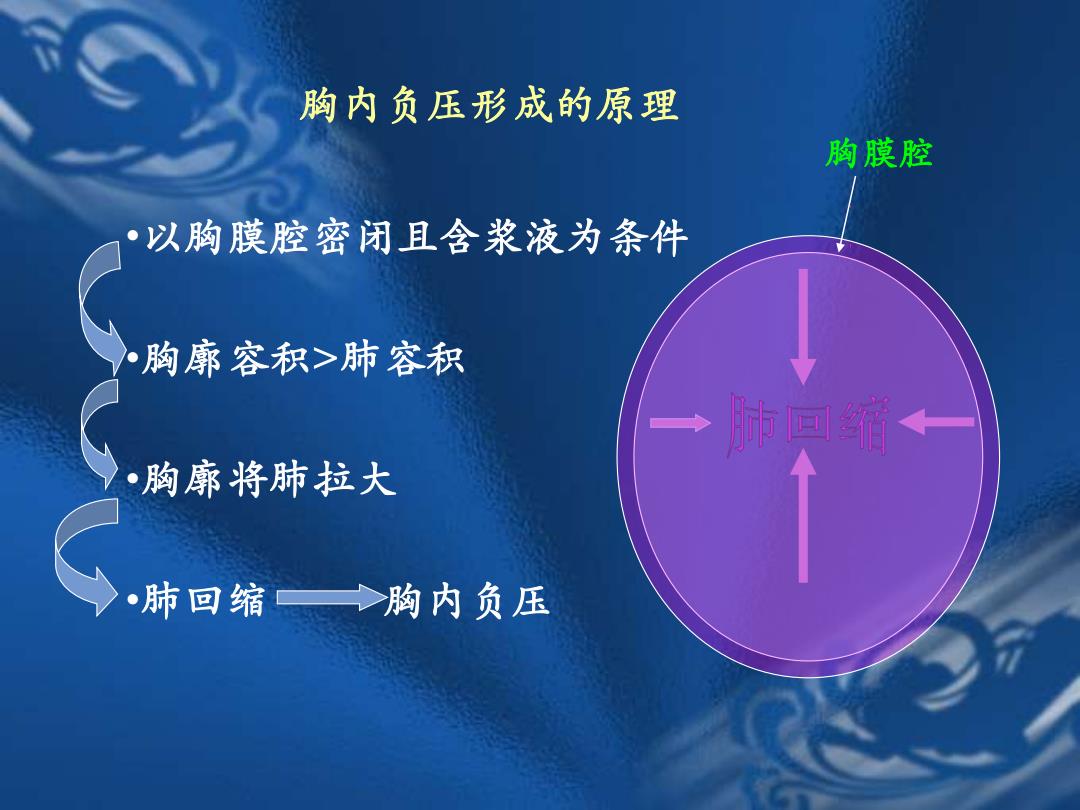
At the first of inspiration,lung volume increases and intrapulmonary pressure decreases below atmospheric pressure.Air enters alveoli under the pressure difference.Intrapulmonary pressure increases as the increasing of gas in lung.At the last of inspiration,intrapulmonary pressure is equal to atmospheric pressure and the air flow stops. At the first of expiration,lung volume decreases and intrapulmonary pressure increases until it exceeds atmospheric pressure.Air outflows lungs and intrapulmonary pressure decreases by and by. Intrapulmonary pressure is equal to atmospheric pressure at the last of expiration
At the first of expiration, lung volume decreases and intrapulmonary pressure increases until it exceeds atmospheric pressure. Air outflows lungs and intrapulmonary pressure decreases by and by. Intrapulmonary pressure is equal to atmospheric pressure at the last of expiration. At the first of inspiration, lung volume increases and intrapulmonary pressure decreases below atmospheric pressure. Air enters alveoli under the pressure difference. Intrapulmonary pressure increases as the increasing of gas in lung. At the last of inspiration, intrapulmonary pressure is equal to atmospheric pressure and the air flow stops

Intrapleural pressure胸内压 Pleural cavity,胸膜腔 Pleural cavity is made up of two layers of pleura.One is visceral layer stick to the surface of lung and the other is parietal layer stick to thorax The effect of this layer of liquid is 胸膜和胸膜腔 (1)Lubrication effect between two 的鼠除茶 layers of pleura. (2)The power between liquid molecules pastes two layers of pleura to 胸东级斯面 肉本楼抽西 make them tightly
Pleural cavity胸膜腔 Pleural cavity is made up of two layers of pleura.One is visceral layer stick to the surface of lung and the other is parietal layer stick to thorax . Intrapleural pressure胸内压 The effect of this layer of liquid is : (1)Lubrication effect between two layers of pleura. (2) The power between liquid molecules pastes two layers of pleura to make them tightly

Intrapleural pressure胸内压 Intrapleural pressure is the pressure within pleural cavity 胸膜腔内的压力 Intrapleural pressure is usually visceral parietal pleura pleura -10 negative pressure. intrapleural space 5 Iung不 chest wall
Intrapleural pressure is the pressure within pleural cavity 胸膜腔内的压力 Intrapleural pressure胸内压 Intrapleural pressure is usually negative pressure

胸内负压形成的原理 胸膜腔 ·以胸膜腔密闭且含浆液为条件 胸廓容积>肺容积 →肺回缩 •胸廓将肺拉大 •肺回缩→胸内负压
胸内负压形成的原理 •以胸膜腔密闭且含浆液为条件 •胸廓容积>肺容积 •胸廓将肺拉大 •肺回缩 胸内负压 胸膜腔

胸内压=肺内压-肺的回缩力 三大气压一肺的回缩力 =0-肺的回缩力 =肺的回缩力 胸内压是云个负压 At the end of expiration of eupnea,the pressure is about (-5~-3mmHg) 平静呼气末约为-5-3mmHg At the end of inpiration of eupnea,the pressure is about (-10~-5mmHg) 平静吸气末约为-10~-5mmHg
胸内压 = 肺内压 - 肺的回缩力 = 大气压 –肺的回缩力 = 0 -肺的回缩力 = -肺的回缩力 胸内压是一个负压 At the end of expiration of eupnea,the pressure is about (-5~-3mmHg) 平静呼气末约为-5~-3mmHg At the end of inpiration of eupnea, the pressure is about (-10~-5mmHg) 平静吸气末约为-10~-5mmHg